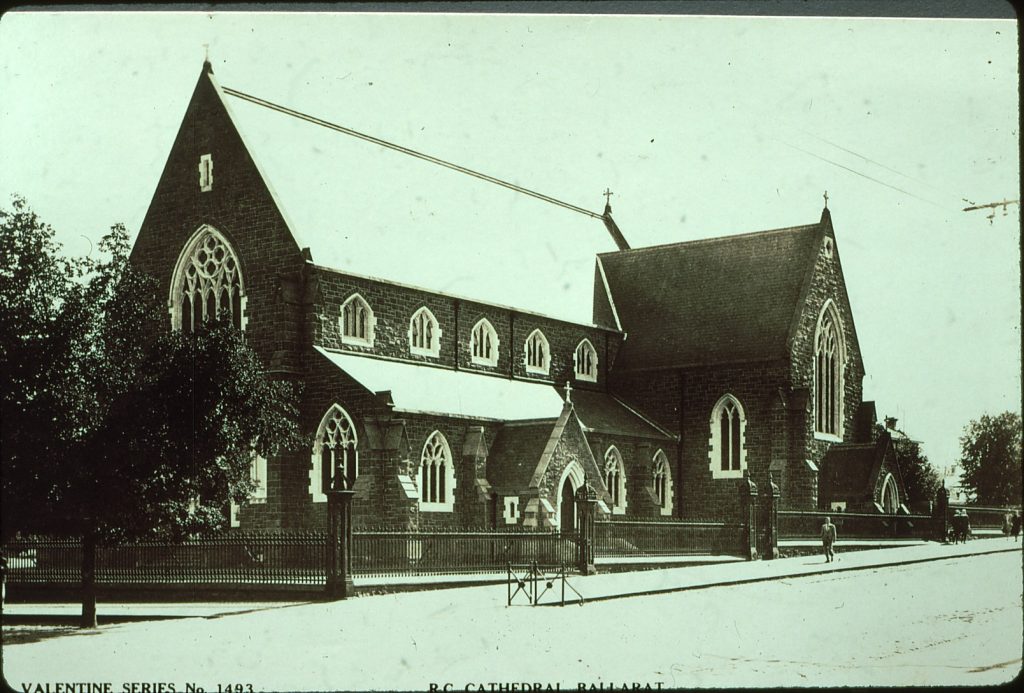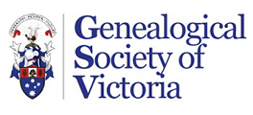At the last meeting for the year of the GSV Writers, we considered topics for next year's writing exercise. Members are invited to try writing about a particular topic such as a family object, a place or a journey. One suggestion, that we write about a particular research experience or archive, reminded some of us of Kath McKay's story of visiting the archives of St Patrick's Cathedral in Ballarat. Her memory of researching by an open fire warmed our hearts. Though this is a bit unseasonal, it might encourage your research over the holiday period ahead - if you can fit it in between more immediate family festivities.
***
Beyond the web
Much as I love my computer and the internet, some of my most precious family history knowledge has come from being able to seek out original documents.
In spite of searching for decades, previous family historians had not been able to find the marriage certificate of our great grandparents: an Irish coach maker and a young maidservant from Wiltshire. We knew they had about ten children in the 1860s and 1870s in Ballarat, but didn’t have a clear record of the children’s names, births or even number. Online indexes didn’t help a lot.
Then I had a little brain-wave. I knew that branch of the family were all Catholic so I contacted St. Patrick’s Cathedral in Ballarat to enquire about records. They eventually replied saying they had all their original records but none were digitised or indexed. However, I was most welcome to come and look for myself.

So one freezing July day I took the train from Melbourne to Ballarat. In the cheery Parish office, warmed by a fire in the hearth, I pored over the huge leather bound tomes brought out of the archives by the Parish Secretary. These are daunting books indeed, nearly a metre by half a metre and several inches thick. They record the births, marriages and deaths of the parishioners, documented in careful copperplate with pen and ink on parchment. I had a fair knowledge that the first child was born about 1860 and the last, my long-dead grandmother, in 1877. So I started with 1860 but it revealed nothing, nor 1861, 1862 and on through the whole decade. The Secretary cheerily brought volume after volume and the piles grew around me. She also kindly made me several cups of tea.
By the time I got to the 1870s with nothing, I was beginning to doubt all I had believed about this branch of our extended family.
Then I found them! In the late summer of 1875, two little girls were baptised, one aged two, the other six. At last! I had found something! Then I turned the page and found the death record for the little six-year-old who had just been baptised days before. Most of the rest of the page and many after that, were taken up with deaths of little children – all from measles in an epidemic that must have swept Ballarat in those early days before immunisation.
Another few turns of the giant pages and there were the rest of them! Five children baptised together, boys and girls aged from 1 to 14 in one job lot! Another page turn and there was the death of the first baptised little girl, the two-year-old. This was followed quite quickly by the baptism of a new baby. Our poor great-grandmother was pregnant when she was nursing, then burying, two of her little daughters. Sad times indeed.
But I still had not found the object of my original search, the marriage of my great-grandparents. More volumes, more page turning. And, finally, in January 1877, after they have had ten children and lost three, this pioneer couple marry. We had been looking in the wrong decade!
A few months later, in April 1877, their new, and last, baby was baptised: a daughter, my grandmother.
Kath McKay
***
This article was first published in 'Fifty Plus Magazine'.

